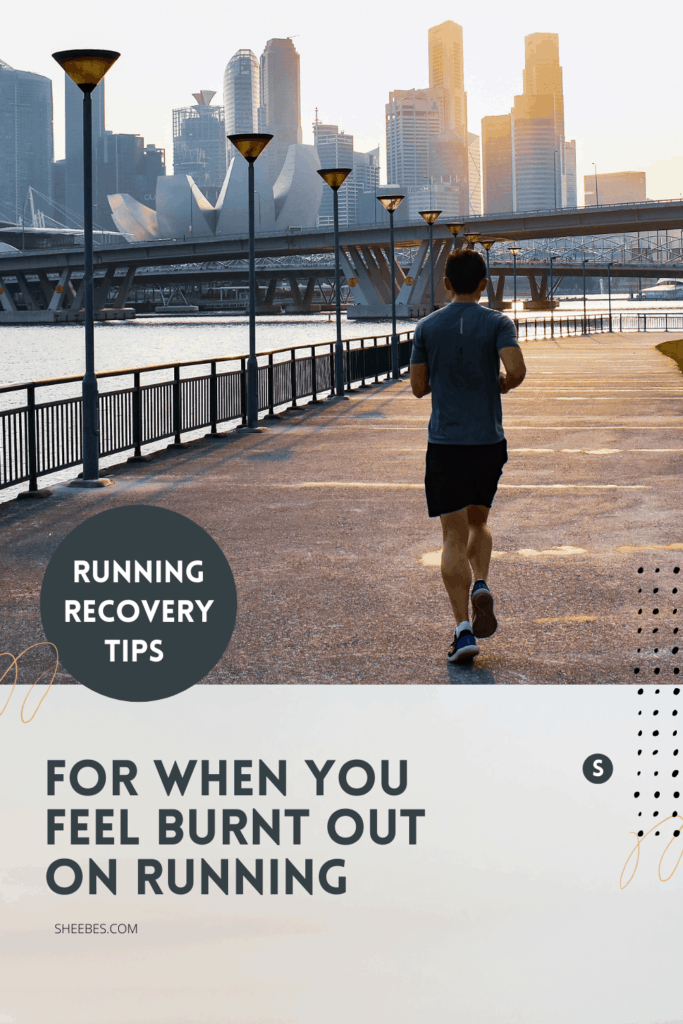Are you feeling sluggish, slower than usual, and lacking in motivation? You may, unfortunately, be facing running burnout. (It’s not always running burnout, and we’ll get to that later).
You can burn out on running, especially if you haven’t taken much time to rest and recover.
So how can you get your running spark back?
That’s what we’ll jump into in this post—why running burnout happens, what running burnout symptoms to look for, overcoming running burnout, and how to get back into running after burnout.
Let’s get started.

Whether you’re a runner looking for running tips or a cyclist searching for cycling advice, this site is here to help you elevate your fitness game.
Affiliate Disclosure: I’m here to help you grow as a rider and runner. So to keep things running smoothly and the content free, I participate in the Amazon Services program and select affiliate networks. So, when you click on those affiliate links, I earn a small commission at no extra cost to you.
WHAT IS RUNNING BURNOUT?
Running burnout happens when you run often without taking enough time to rest and recover.
So when running burnout happens, you might experience these symptoms:
- No motivation to run.
- You struggle to maintain your usual running paces.
- You find it tough to fall asleep at night. And when you do, you wake up in the middle of the night.
- You’re tired all the time.
- You’ve got tired, heavy legs from running.
Running burnout has a spectrum—on one end, there’s overreaching and on the other end, there’s overtraining. We’ll dive into more detail about this running burnout spectrum in a moment.
But first, an important note.
The running burnout symptoms (low motivation, feeling sluggish on your runs, and feeling tired all the time) can also be a sign of an iron deficiency.
About 17% of male and 50% of female endurance athletes suffer from an iron deficiency, so consider getting your iron levels checked, especially if you follow a vegan diet or have a menstrual cycle.
⚠️An iron deficiency is not something you can self-treat because this puts you at risk for iron overload, which is dangerous. Consult with a sports nutritionist if you have an iron deficiency to guide you through ways you can safely increase your iron intake.
Join the newsletter to receive bi-weekly tips geared toward cyclists and runners for even more inspiration and practical running advice.
LET’S TALK A LITTLE MORE ABOUT RUNNING BURNOUT
Running burnout has a spectrum—on one end, there’s overreaching, and on the other end, there’s overtraining.
Though overreaching is the beginning of running burnout and puts you at a higher risk of overtraining, this stage can be helpful.
In this case, it’s called functional overreaching—training hard, followed by rest—and it is a deliberate part of any running training plan to help you reach your running goals.
Whether your goal is to finish your first 10K or do your first marathon, functional overreaching can help you get fitter.
But training hard and following it up with rest is a tricky balance. Some of us may need more recovery time than others. (But you can turn to these best recovery drinks for runners to speed up your recovery.)
And because there’s no set time frame for recovery, it’s easy to tip the scales into too much training and not enough recovery.
So when this happens—too much training without enough recovery—you’ll begin to feel sore, sluggish, or low in motivation.
When you notice these signs, don’t run more hoping that these symptoms will go away because that could push you into a more severe form of running burnout—overtraining.
How to recover from this stage of running burnout: complete rest, with no running, anywhere from a few days to a few weeks, eat well, and sleep.
It may help to write notes in a running planner on how you feel throughout your rest period, so you know how you’ve been recovering and when you feel fresh enough to resume running.
HOW TO SPOT RUNNING OVERTRAINING SYMPTOMS
Remember, running burnout has a spectrum—from overreaching to overtraining.
Overtraining happens when you’ve let overreaching (running without enough recovery) continue.
The difference between overreaching and overtraining is the time you’ll need to recover—weeks vs. months.
You’ll recover from overreaching in a few weeks, but recovering from overtraining takes months.
The symptoms of overtraining in running vary by person, but some running overtraining symptoms are:
- Premature fatigue
- Feeling more irritable than usual
- Low motivation
- Little to no rest days
- A plateau or nosedive in your running performance
- Personal and emotional stress
- Disturbed sleep
- Frequent sickness
- A decrease in strength and fitness
OVERCOMING RUNNING BURNOUT
No running for at least 4 weeks, but you may need more time because recovery length varies by runner. Unfortunately, there’s no quick way to recover from running burnout, and the only way out of running overtraining is to rest.
After a month of no running, you will most likely feel better, but that won’t necessarily mean you’ve fully recovered from running overtraining. It may still be too early for you to jump back into the same amount of running you did before you took time off.
It’s frustrating that there’s no concrete timeline for recovering from overtraining.
But much like overreaching, it’ll be helpful to write notes on how you feel throughout your rest period (this running planner can help), so you know how you’ve been recovering and when you feel fresh enough to begin running again.
HOW TO GET BACK INTO RUNNING AFTER BURNOUT
When you return to running after overtraining, do this slowly and gradually. Do easy, relaxed runs, or a walk-run plan, and see how you feel after each run. If you don’t feel good, take more time to rest, sleep, and eat well.
Writing notes throughout your recovery from running burnout can give you a good gauge of when you can return to running. If you don’t have a running log, the running planner below may help you keep track of your running recovery.
Are you ready to ease back into running? Grab this first week of walk-run workouts to get you moving today.
shop

Sources
Physiological Perspective of Endurance Overtraining – A Comprehensive Update